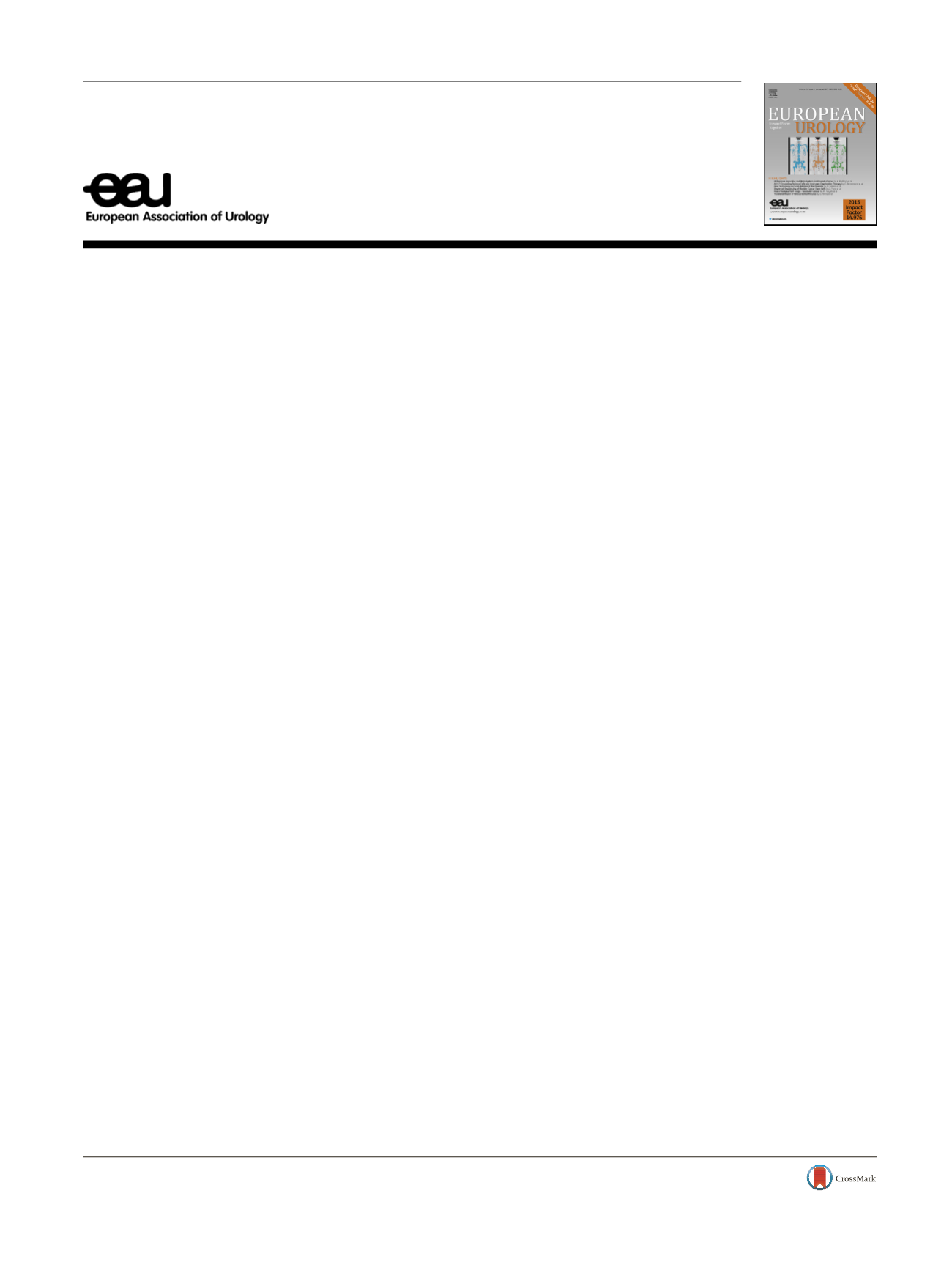

Letter to the Editor
Re: Alessandro Morlacco, John C. Cheville,
Laureano J. Rangel, Derek J. Gearman, R. Jeffrey Karnes.
Adverse Disease Features in Gleason Score 3 + 4
‘‘Favorable Intermediate-risk’’ Prostate Cancer:
Implications for Active Surveillance. Eur Urol
2017;72:442–7
We read the article by Morlacco et al
[1]
with great interest.
The authors performed an in-depth analysis of adverse
disease features in Gleason score 3 + 4 ‘‘’favorable interme-
diate-risk’’ prostate cancer, and we have some thoughts
regarding the analysis that we would like to discuss.
Prostate cancer most often presents as a multifocal
disease, with the index lesion driving the cancer’s natural
history
[2]
. The index lesion in radical prostatectomy
specimens has been defined as the lesion with extraprostatic
extension, the highest Gleason score, or the largest volume if
Gleason scores are the same, in order of priority
[3]
. However,
in this study, tumor size, especially the size of the index
lesion, was not mentioned, despite the emphasis on
extraprostatic extension and Gleason score.
In general, Gleason score upgrading is more common
than downgrading
[4], but the results in this study are the
opposite. Besides the application of stringent inclusion
criteria, could this be attributed in part to bias between the
pathologists for biopsy and radical prostatectomy speci-
mens?
The use of active surveillance and focal therapy creates
greater accuracy requirements for prostate biopsy, particu-
larly with respect to identifying the index lesion, Gleason
score, and clinically significant tumors. Transrectal biopsy
has shortcomings, such as a high false negative rate,
underestimated risk classification, and a low rate of
detection for anterior and apical cancer
[5] .Hence, to
ensure the accuracy of diagnosis of ‘‘very favorable Gleason
score 3 + 4 intermediate-risk’’ prostate cancer, the question
arises as to whether it is necessary to set an accuracy
threshold for the prostate biopsy method.
Conflicts of interest:
The authors have nothing to disclose.
References
[1]
Morlacco A, Cheville JC, Rangel LJ, Gearman DJ, Karnes RJ. Adverse disease features in Gleason score 3 + 4 ‘‘favorable intermediate- risk’’ prostate cancer: implications for active surveillance. Eur Urol 2017;72:442–7.
[2]
Ahmed HU. The index lesion and the origin of prostate cancer. N Engl J Med 2009;361:1704–6.
[3]
Baco E, Ukimura O, Rud E, et al. Magnetic resonance imaging- transectal ultrasound image-fusion biopsies accurately character- ize the index tumor: correlation with step-sectioned radical pros- tatectomy specimens in 135 patients. Eur Urol 2015;67:787–94.
[4] Ploussard G, Isbarn H, Briganti A, et al. Can we expand active
surveillance criteria to include biopsy Gleason 3+4 prostate cancer?
A multi-institutional study of 2,323 patients. Urol Oncol 2015;
33:71.e1-9.
[5]
Acher P, Dooldeniya M. Prostate biopsy: will transperineal replace transrectal? BJU Int 2013;112:533–4.
Chen Du*
Hui Chen
Changfu Li
Department of Urology, Harbin Medical University Cancer Hospital, Harbin,
People’s Republic of China
*Corresponding author. Department of Urology, Harbin Medical
University Cancer Hospital, No. 150 Haping Street, Harbin, People’s
Republic of China.
E-mail address:
duchen2016@sina.com(C. Du).
January 22, 2017
E U R O P E A N U R O L O G Y 7 2 ( 2 0 1 7 ) e 1 2 5ava ilable at
www.sciencedirect.comjournal homepage:
www.eu ropeanurology.comDOI of original article:
http://dx.doi.org/10.1016/j.eururo.2016.08.043.
http://dx.doi.org/10.1016/j.eururo.2017.01.0400302-2838/
#
2017 European Association of Urology. Published by Elsevier B.V. All rights reserved.
















